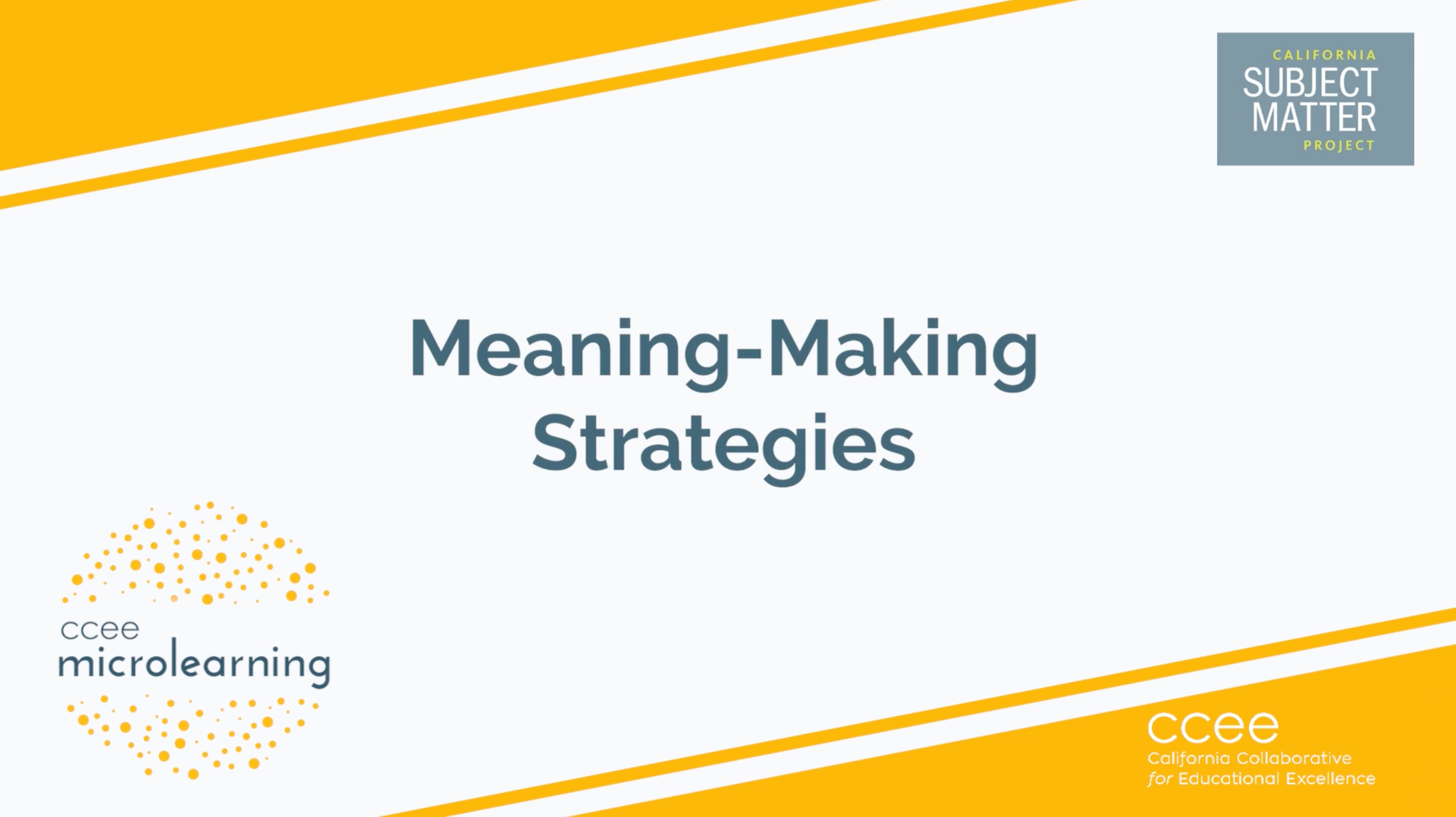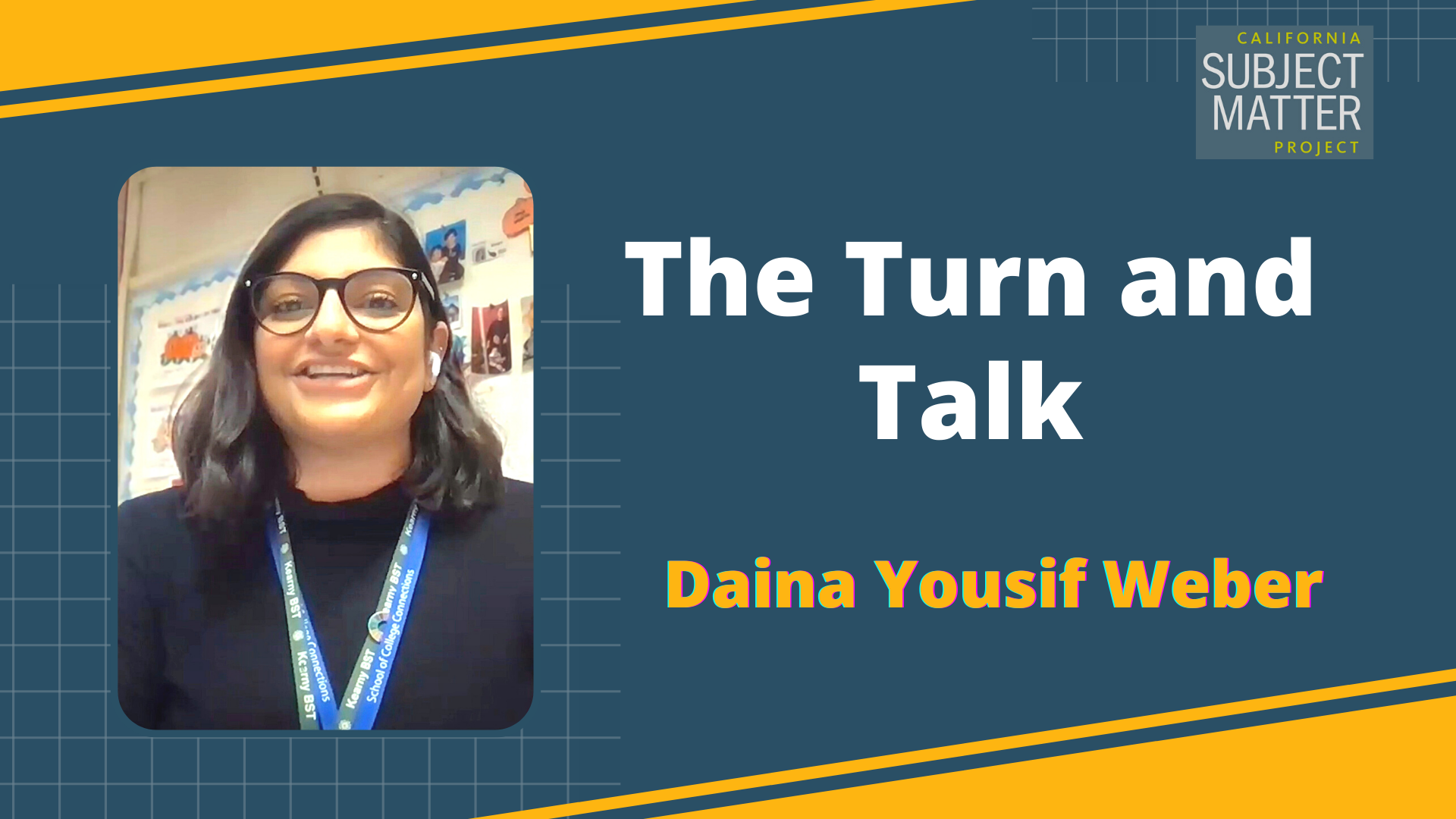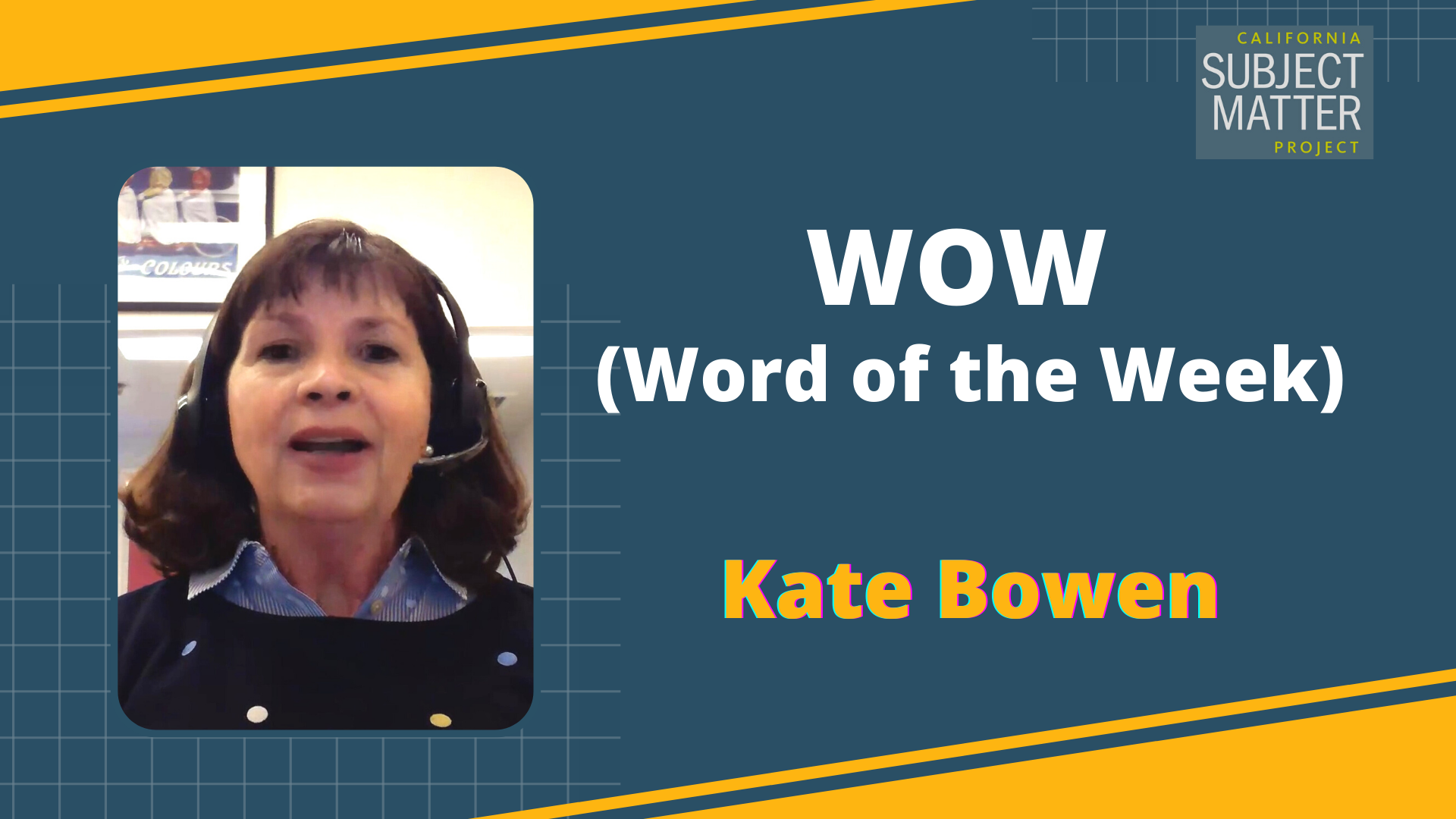Watch the Video
Presenter
Valerie Sun, teacher specialist at Glendale Unified School District in Southern California with a previous experience in kindergarten French immersion teacher and middle school and high school French as a world language teacher.
Transcript
Bonjour! My name is Valerie and I’m a teacher specialist at Glendale Unified School District in Southern California. I was a kindergarten French immersion teacher, and I also taught middle school and high school French as a world language. The strategy I’ll be sharing is called “Partner Talk.” We will specifically focus on one single topic called “I Am, I Can” as the vocabulary and sentence frames can be adaptable for all language levels and for all age groups.
Partner talk using I am, I can is a strategy designed to help students practice using instructional language in a low stakes environment to talk about themselves. Students can also ask partners questions to learn about each other. They often use sentence frames that the teacher has provided, or that you have provided for them with vocabulary words that they have learned.
The go-to sentence frame is a self description using I am plus an adjective, or I am plus a role in society or profession, and I am plus an emotion. So students can use, I can plus a verb to describe the actions and activities related to their abilities and interests.
To prepare to use partner talk, I make sure my students have a repertoire of words that they can use. We brainstorm adjectives, roles and professions, or emotions. I also provide them with a sentence frame: I am “blank” and I can “blank” in the instructional language.
For beginning language learners, they would make a list of everything they are. For example, I am nice, I am tal, I am American, I can swim, I can jump, I can run, et cetera. For intermediate level students, they would provide a description of how or why, such as: I am American because I was born in the United States, or I can run because I participate in the track team. We practice the words and act some of them out to help students retain the words and their meaning.
Partner talk can happen with a person sitting beside, in front, or behind the student. And to get the student started, I would tell them which partners they would share with in the allotted time. By saying shoulder partners, they share with the person sitting beside them, and by saying face partners, they share what the person sitting across from them, if they are in a group seating setting. If they are sitting in rows, you want to maybe be more specific in saying: row one, you are going to share with row two; row three, you are going to share with row four, with the person beside you.
The important part is every person knows exactly who they are sharing with before they go and share. I also let my students know that they have a set time from one to five minutes to share their descriptive sentences of who they are. I remind them that when they hear the timer’s alarm, they will finish their thought, face forward and be ready to listen to the instruction again. I also provide a hand signal such as a specific clap to let them know that the sharing time has finished. This step is extremely important because it sets the expectations for students to focus on you after the sharing activity. Once the expectations are clear, I give a signal to let them know that they can speak to their designated partners.
As partners partake in partner talk, I circulate the room, listening to their conversation. I usually try to listen to as many students as possible, at least five or six groups, and I ask at least one person from each group to share their practice responses. After my timer rings, I give the signal to my students to gain their full attention.
I ask my volunteer students who I heard in the partner talk time to share their ideas. I validate their contribution and thank them for sharing. After the volunteer students have shared their part, I ask the class if anyone else would like to share, and I give them the platform. If there is time, my students will write the sentence they used to describe themselves. That way the teacher can have evidence of their language practice for the day.
For this strategy, I have found it helpful to use a consistent clap or phrase to regain student attention. For students who are struggling with the language, I pair them with another student who seem more confident with vocabulary use, and I also remind them to look at the board or another strategic location where I have written down the brainstormed word. For students who have a hard time following the protocol, I usually visit them during the one to five minutes that I have set aside and I stand in proximity of them to remind them to listen when partner talk is complete.
Here are some examples of the call and response that I would use to regain student attention after the timer has rung. The most used one is “Class, Class”, and the students would respond with, “Yes, Yes”. A fun one that I use with my English class is” Everybody!!” and they would sing back “Right Now!”. With my French class, I would say “Bonjour, Bonjour” and they would respond with “Bonjour, Bonjour”. With the younger students, I would vary my voice and tone and the students would copy the voice and tone. For example, I would whisper “Bonjour, Bonjour” and their job would be to respond in a whisper “Bonjour, Bonjour”.Here are some examples of the call and response that I would use to regain student attention after the timer has rung. The most used one is “Class, Class”, and the students would respond with, “Yes, Yes”. A fun one that I use with my English class is” Everybody!!” and they would sing back “Right Now!”. With my French class, I would say “Bonjour, Bonjour” and they would respond with “Bonjour, Bonjour”. With the younger students, I would vary my voice and tone and the students would copy the voice and tone. For example, I would whisper “Bonjour, Bonjour” and their job would be to respond in a whisper “Bonjour, Bonjour”.
Before we end, I would like to emphasize that partner talk is a great strategy to have students use their instructional language with vocabulary they have learned, and perhaps new vocabulary that you can add to their repertoire. This strategy can also be used throughout the instructional period as well. The most important part of partner talk, though, is being able to call back the students so that when they are done sharing their language or their thought, they are able to listen to you for the next set of instructions. Be sure that you are clear in your expectation and signal to call students back, and remember for every 10 minutes of teacher instruction, there should be two minutes of students sharing or processing of their thinking. I hope you have a lot of fun using the strategy. Take care.



